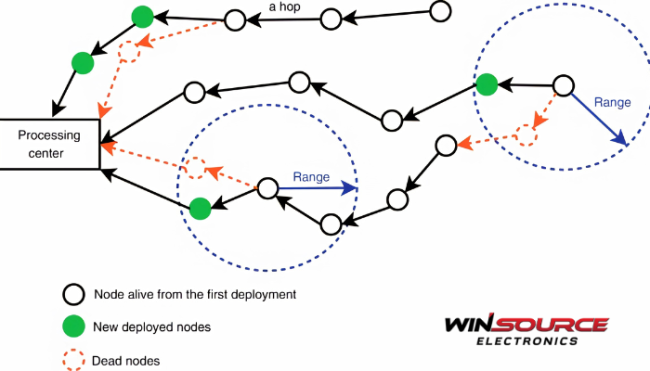
* Question
What are the types of node deployment algorithms based on deployment methods?
* Answer
Node deployment in networks, especially in the context of sensor or communication networks, is crucial for ensuring optimal coverage, connectivity, and functionality. The deployment methods can be broadly categorized into two main types: deterministic and randomized. Each type uses different algorithms or strategies based on the specific requirements and constraints of the network. Here’s a breakdown of these categories and the types of algorithms used in each:
1. Deterministic Deployment
Deterministic deployment involves placing nodes at specific, predefined positions. This method is often used in environments where precision is critical, or where the network must guarantee complete and reliable coverage. Deterministic methods are suitable for structured environments, such as industrial automation, urban planning, or specific agricultural setups.
Algorithms and Strategies:
– Grid-Based Deployment: Nodes are placed at regular intervals in a grid pattern. This ensures uniform coverage but might not be the most efficient in terms of resource use.
– Pattern-Based Deployment: Nodes are deployed following specific patterns that might be adapted to the topological features of the area, like hexagonal, triangular, or circular patterns.
– Line-Based Deployment: Used in linear infrastructure monitoring like pipelines, roads, or borders where nodes are deployed along lines or paths.
2. Randomized Deployment
Randomized deployment involves placing nodes in a random or pseudo-random manner within the target area. This method is generally used in environments where precise placement is less feasible or too costly, such as in hazardous or inaccessible areas. It’s often used in large-scale environmental monitoring or military applications.
Algorithms and Strategies:
– Uniform Random Deployment: Nodes are scattered randomly across the entire area with uniform probability. This method is simple but may result in uneven coverage.
– Gaussian Distribution: Nodes are deployed according to a Gaussian distribution to focus more nodes in specific central areas, potentially mimicking higher threat or interest levels.
– Random Walk Deployment: Nodes are initially placed randomly, and then they perform a random walk from their initial positions to spread out over the area. This is useful in mobile sensor networks.
Hybrid Deployment
Hybrid methods combine elements of both deterministic and randomized deployments. These approaches are used to optimize both the benefits of predictable, planned deployment with the flexibility and scalability of random deployment.
Algorithms and Strategies:
– Sequential Deployment: Starts with a deterministic approach and fills in gaps or expands coverage randomly.
– Adaptive Deployment: Nodes are placed deterministically, and additional nodes are added randomly based on real-time data about coverage or network performance.
Application-Specific Deployments
Some deployments are tailored specifically to the needs of particular applications, such as:
– Clustered Deployment: Nodes are deployed in clusters around points of interest, which can be determined by the importance of certain locations or by the need for higher resolution data in those areas.
– Barrier Coverage: Specifically aiming to create a barrier with sensors to detect movements or changes, typically used in border security or restricted area surveillance.
Each deployment strategy and algorithm choice depends on the network’s objectives, environmental conditions, the accessibility of the area, and the required density and connectivity of the nodes. The decision also hinges on cost considerations, the type of sensors or nodes being used, and the expected network lifetime.

COMMENTS